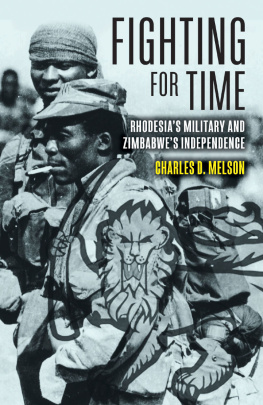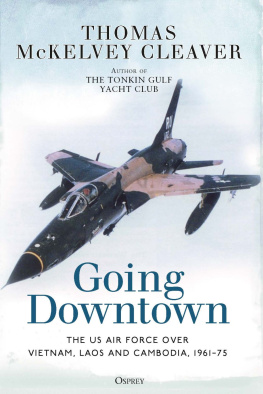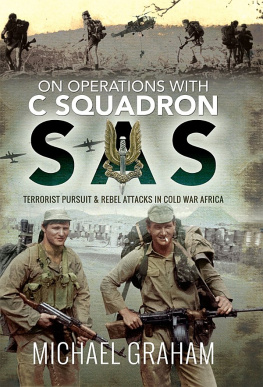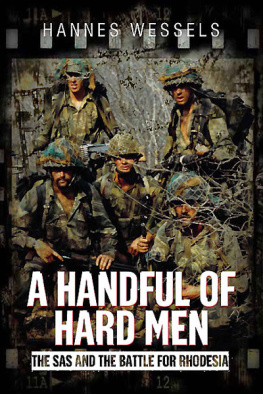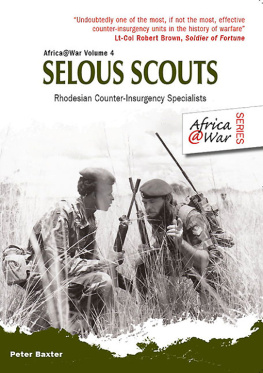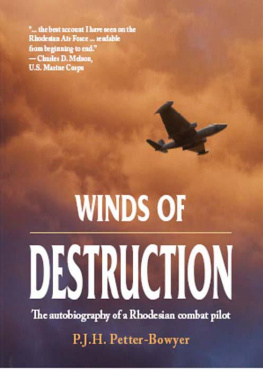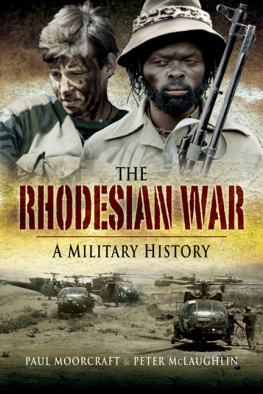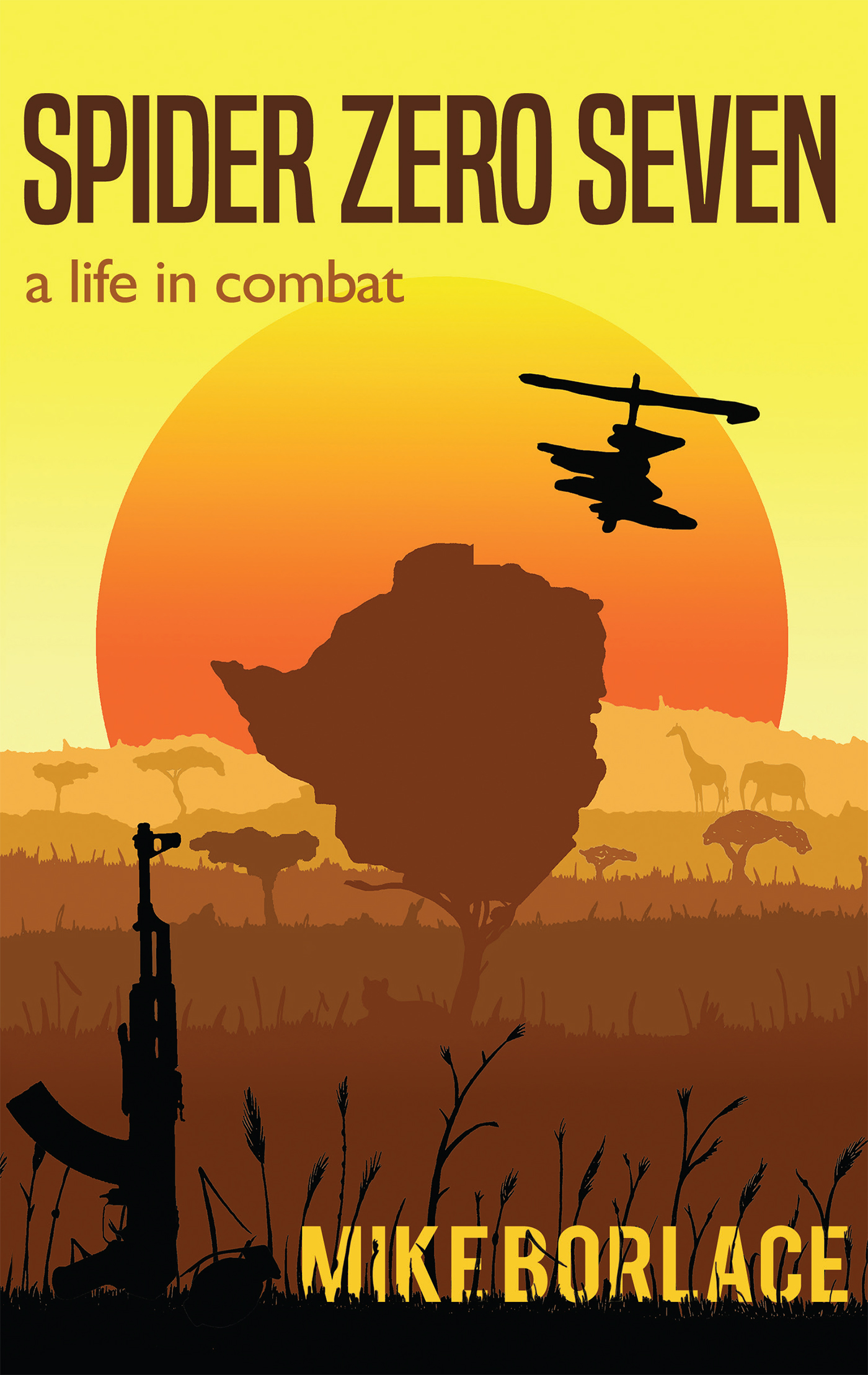Spider Zero Seven
Mike Borlace
Copyright 2018 Mike Borlace
The moral right of the author has been asserted.
Apart from any fair dealing for the purposes of research or private study, or criticism or review, as permitted under the Copyright, Designs and Patents Act 1988, this publication may only be reproduced, stored or transmitted, in any form or by any means, with the prior permission in writing of the publishers, or in the case of reprographic reproduction in accordance with the terms of licences issued by the Copyright Licensing Agency. Enquiries concerning reproduction outside those terms should be sent to the publishers.
Matador
9 Priory Business Park,
Wistow Road, Kibworth Beauchamp,
Leicestershire. LE8 0RX
Tel: 0116 279 2299
Email: books@troubador.co.uk
Web: www.troubador.co.uk/matador
Twitter: @matadorbooks
ISBN 978 1789010 787
British Library Cataloguing in Publication Data.
A catalogue record for this book is available from the British Library.
Matador is an imprint of Troubador Publishing Ltd
This book is dedicated to the real heroes of the Rhodesian
Air Force:
All of the technician/gunners of 7 Squadron
But most especially to the memory of
Hajj
Flight Sergeant Henry Allan James Jarvie, MFC
Killed in action, Mtoko, 12 January 1978
A special thank you to those that encouraged me to write this and to my family, Angela, Jon-Selous and Sally. Patrick King for providing the framework, Patrick Mavros for providing a prod when it was needed, Sophie Gillespie for editing, and the production people at Matador. George Ashton-Jones of the Compost Heap for the cover, Ian Lynn for the video.
Nor law, nor duty bade me fight,
Nor public men, nor cheering crowds,
A lonely impulse of delight
Drove to this tumult in the clouds
William Butler Yeats (18651939)
Contents
Prologue
We are flying really low, weaving slightly through the thorn and acacia bushes, the wheels brushing through the tops of the long grass. I have a last look at the folded map held between my right hand and the cyclic to get the mental picture organised in my mind, and then tuck the map away. I have a niggling doubt that we are in the wrong valley as the OP has reported that the terrorist group has not started to bombshell on hearing our approach, but the second hand of my watch is coming up to 11:47 and I reckon we are half a minute from their reported position.
K-Car is thirty seconds out. Pulling up. All callsigns stay off this frequency, there is a punch-up in progress.
I raise the nose and start to convert speed into height; I want to be at five to six hundred feet above the target. The gunsight is calibrated for us to be at eight hundred and fifty feet, but I am a believer in the better you can see the target, the better you will shoot. I turn slightly right to offset us in order that the cannon can come straight into play firing to the left. The horizon expands rapidly as we climb.
Theyre running! Theyre running! excitedly from the OP.
I see them a couple of hundred yards ahead.
Oh-kaay, we are in contact. G-Cars go in a wide orbit, on the radio. Got them visual? Open fire when youre ready. Take the group together first, on the intercom.
Four of the group are running fast away from us westwards along the valley but the other four are standing together and firing at us. There is a lot of popping around the aircraft; their fire is close, but theyre not hitting us yet. I roll the aircraft quite gently to the left and ease my view of the door catch on the central pillar of the cockpit onto the group of four. This acts as a rough gun sight the cannon is then in a comfortable position for the gunner. I see the barrel move slightly as the gunner peers through his sight and there is a crash, the smell of burning explosive and the whole helicopter judders as he lets off a three-or four-round burst. The rounds hit the ground about ten feet from the group but one of them crumples to the ground; they are HEI high-explosive incendiary twenty-millimetre calibre, and explode into hundreds of red hot pieces of shrapnel when they hit. As the others start to move apart, the gunner makes a quick adjustment and slams down three quick bursts right into the middle of the group. They all fall to the ground.
Put down some more. I dont want this lot snivelling away whilst we deal with the others, and he puts three more bursts down into the four prone bodies.
We are not even halfway around the first orbit, so instead of continuing in our left turn I roll the aircraft violently to the right and back to the left when the nose is positioned to take on the next target, a lone gook high-stepping it through the scrub, and getting too close to dense bush into which he is likely to disappear. He falls after four bursts; he is running so fast it takes a moment to gauge the lay-off. I get the gunner to put down another burst to make sure he stays down and position us for the sixth. He has taken cover by an anthill, good cover against ground troops but it is not going to help him from us. It looks as though he is carrying an RPD machine gun but he is not firing it and appears to be trying to hide in the scrub. It probably looks quite thick from his point of view, but we can see him easily and the gunner hits him on the first burst. I have been watching three of the G-Cars about a quarter of a mile away out of the corner of my eye. They are in a fairly tight low-level orbit and three streams of tracer are hosing out towards another anthill.
OK, Yellow, move out, were on the target.
The trooper aircraft ceases firing and extends its orbit as we come overhead, locate the guy trying to burrow out of sight in the thorn bush around the anthill, and despatch him with three more bursts. There is no sign of the eighth member of the group, and we widen our orbit to search for him. The last one was already more than a kilometre from the initial contact position, which demonstrates how fast you can cover ground when there is a deadly incentive to encourage you.
K-Car, this is two seven Bravo, this is the relay station on the big brick near Buhera. Do you have a sitrep for ComOps?
Two seven Bravo. Tell them we are in contact and the score at this time is seven out of eight.
I see some birds explode into flight out of a tree, and as I look I notice further movement, and then blue denim amongst the branches. The bugger has climbed into a tree. Thats fairly unusual. I direct the gunner to the tree and although he doesnt see the gook himself a sustained burst sends branches and debris into the air and a body falls into a heap at the foot.
Two seven Bravo, make that eight out of eight. We are clearing up here and will be refuelling at Gwanda.
I look at my watch. It is 11:51. In four explosively violent minutes, eight men have died. It has been the one hundred and forty-ninth time I have led a fire force into a successful contact inside Rhodesia, is one of the fastest ten out of ten punch-ups on record, and as it turns out it is the last time I will do it. Three days later I leave Shabani for Salisbury and start the process of leaving the squadron.
The Author
Mike Borlace, combat pilot and special forces soldier, first achieved military distinction in Rhodesia (now Zimbabwe) during the 1970s.
Born in Cornwall, England, Mike was trained in the Royal Air Force and Royal Navy, becoming an operational commando helicopter pilot.
In 1974, he was recruited into the Rhodesian Air Force, ostensibly to fly Hawker Hunters, but his helicopter experience took him onto 7 Squadron, at that time becoming heavily engaged in the terrorist war and stretched for trained personnel.


